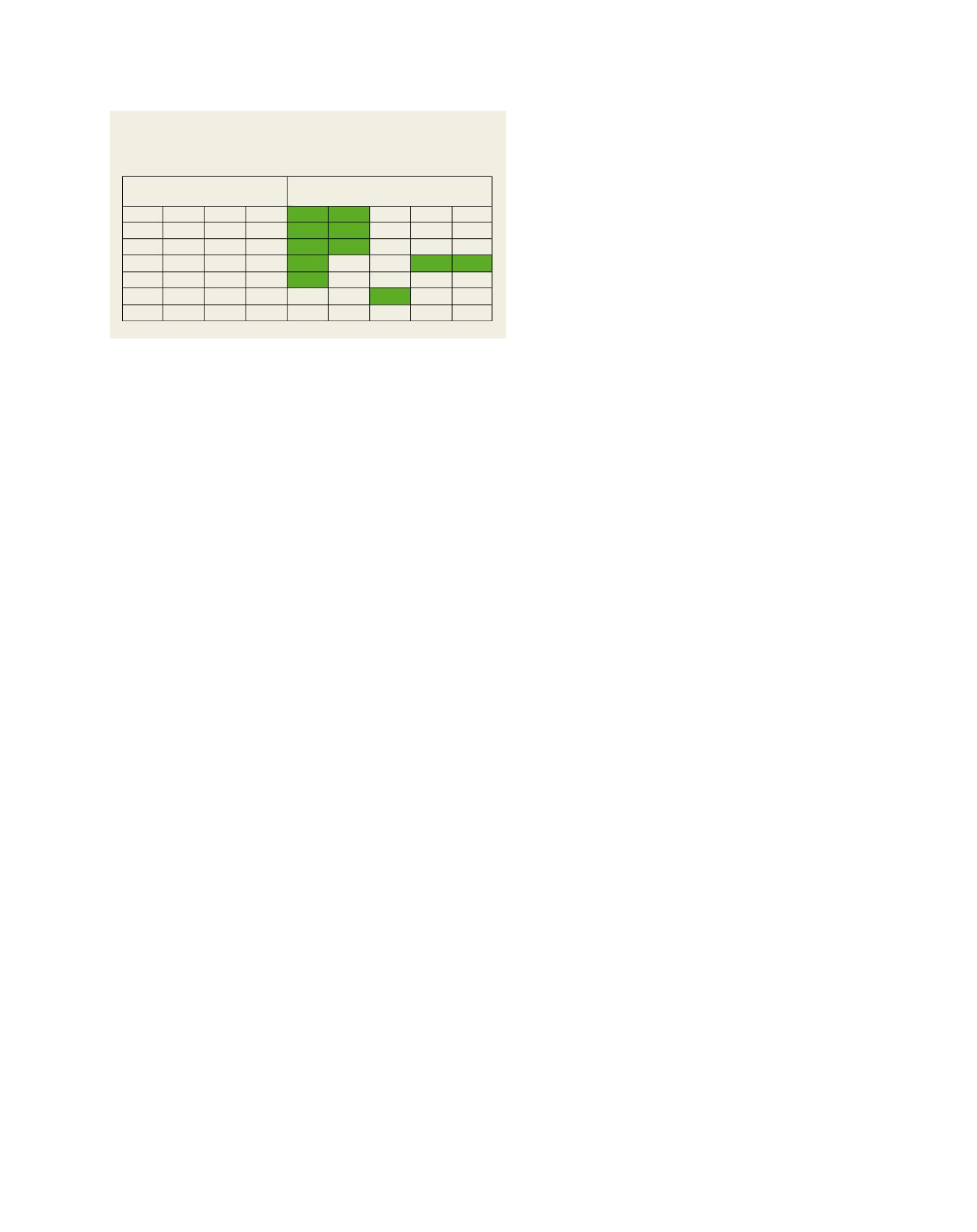

[
] 48
A
griculture
been made or are being made with the UK Met Office and Bureau
of Meteorology for the development of suitably designed, more
targeted output systems.
Funding
The above programme for the Queensland sugar industry is directly
funded as a research and development project by QSL ($A2.7m
plus all data and travel costs). Thus, following earlier funding by
a research and development corporation through levies made on
the value of crops harvested in any year, the funding is now being
provided directly from the private sector. This process was neces-
sary because climate science and developments in seasonal climate
forecasting could provide obvious benefits to all sectors of the
Queensland sugar industry, which was suffering massive losses,
especially in La Niña years.
The project has a five-year timescale with plans to provide
continuous funding beyond that if the research and development
and ongoing output is deemed to be successful in aiding deci-
sion-making across the industry, especially in the exporting and
marketing sectors.
Making it happen
There are four key institutions involved in climate forecast and crop
modelling provision:
• USQ – climate science, engineering, remote sensing, aspects of
downscaling, farmer education, and project leadership
• JCU – key aspects of crop simulation modelling
• UK Met Office (through a research agreement) – research
involving the capability of a new generation of climate models
(UK Met Office and ECMWF) for the sugar industry in
Queensland; provision of data feeds from current GCM outputs
• Bureau of Meteorology – provision of outputs from POAMA/
ACCESS model into an integrated overall modelling system;
provision of generalized output involving the Madden Julian
Oscillation, including information provided by the Tropical
Climate Bulletin.
The current project development involves QSL, Queensland Cane
Growers’ Council (head office and all branch offices) and the
Queensland Department of Agriculture, Forestry and Fisheries
(both head office and the Mackay regional office).
It should be noted that the above activity is currently within a
research and development framework. If deemed successful by all
sectors of the sugar industry, especially the marketing
and export sections of the overall value chain, then
an operational system involving regular provision of
output will be provided by a combined team compris-
ing the UK Met Office and the Australian Bureau of
Meteorology, the current operational statistical seasonal
climate forecast system in use in Queensland and also
used by the Queensland Government, and crop model
output runs developed by USQ and JCU.
Evaluation
A full feedback process conducted through intensive
workshops is an integral part of the project. The research
project will be evaluated against agreed milestones in
October 2012. Each workshop is evaluated through
use of a carefully designed questionnaire provided to
each participant. The project and project funding (and
follow-up services) will be adjusted in light of the
evaluation received, especially by the donors. Aspects
related to climate change are not directly included in
the project.
Capacities
At present, mostly existing personnel have been
engaged in the research project and development stages
of this work. These include two climate scientists (one
at PhD level), one mathematics/statistics specialist (at
PhD level) one sugar cane crop simulation modelling
specialist (PhD level), one specialist extension office
(at MSc level) and computer programming project
support staff.
It is probably a mistake to regard the separation of
capabilities according to whether individuals are ‘users’
or ‘developers’. In this project there are two climate
scientists with very extensive research publication and
operational capabilities, located at USQ. They interact
with key climate scientists at the UK Met Office and the
Bureau of Meteorology, and they also have the capacity
to liaise directly with agronomists and crop model-
lers engaged at JCU. Key user agencies such as QSL or
Queensland Cane Growers’ Council do not have climate
scientists on their staff; rather, they employ chemical
engineers or environmental scientists.
Some capacities are lacking. It can be difficult to
locate climate scientists within national organizations
who have the required breadth of understanding of the
computerized interfacing needs in linking a climate
model to a crop simulation model, for example. Rather
complex software development is needed that can inte-
grate all modelling and output systems involving a
wide range of expertise. Additional challenges involve
the sheer effort required in developing legal agreements
between agencies and associated activity.
A massive amount of innovation is needed if one is
serious about linking climate science with real decision-
making, especially if the output required is much more
than normal climate variables, such as ‘tons of sugar
per hectare’ or similar. The key innovation is in devel-
opment of engineering and software systems that can
Source: USQ/JCU
Example of forecasting probability values of excessive rainfall
– Macknade Sugar Mill, North Queensland (values shaded in
green are statistically significant)
on
on
on
on
on
on
on
on
0
1
2
3
4
5
6
rainfall
rainfall
rainfall
rainfall
rainfall
rainfall
rainfall
aug/sep
jul/aug
jun/jul
may/jun
apr/may
mar/apr
feb/mar
0.05
0.00
0.00
0.00
0.06
0.13
0.23
0.47
0.46
0.56
0.41
0.32
0.29
0.29
0.10
0.30
0.13
0.25
0.21
0.06
0.13
0.23
0.32
0.26
0.43
0.39
0.38
0.25
0.22
lead
(mths) response
SOI
period Neg Pos
32032 Macknade
Fal
Ris Neu
0.21
0.16
0.10
0.19
0.30
0.30
















